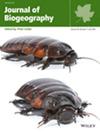Seed Mass Variations of Angiosperms and the Differences in Their Primary Drivers Across Climate Regions in China
Abstract
Aim
Seed mass is a key reproductive trait and is closely related to seed dispersal, germination, seedling growth and competition capability. Characterising the geographical pattern and the primary factors of seed mass variation is crucial for understanding plant reproductive strategy under heterogeneous environments. However, how the environment, phylogeny and life history traits simultaneously affect the variation in seed mass in China and their differences across climate regions remains unclear.
Location
China.
Major Taxa Studied
Angiosperm species.
Methods
We compiled a database on seed mass comprising 4569 observations that belong to 2064 angiosperms from 1152 sampling sites in China. A phylogenetic linear mixed model was used to disentangle the relative contributions of environment, phylogeny and life history traits (i.e. plant growth form, fruit type and dispersal mode) to seed mass variation. This analysis was conducted on a national scale and four climate regions, including tropical, subtropical, temperate and plateau regions.
Results
Seed mass was significantly associated with annual climatic averages and climate variability and seasonality variables. Soil pH was strongly related to seed mass, while soil nutrients were not. Environment, phylogeny and life history traits together explained 75.3%–86.6% of the total variation in seed mass in China and four climate regions. Life history traits and phylogeny were the most important factors of seed mass variation in China and most climate regions (14.2%–30.1% and 8.0%–19.7%, respectively) except for the tropical region. In the tropical region, environment was the strongest driver of seed mass variation (52.6%).
Main Conclusion
Our study emphasised the differences in environmental and ecological effects on seed mass under heterogeneous climatic contexts and provided a reference for continued research on the complex interactions between plant reproductive strategy, evolutionary process and the environment.

 求助内容:
求助内容: 应助结果提醒方式:
应助结果提醒方式:


